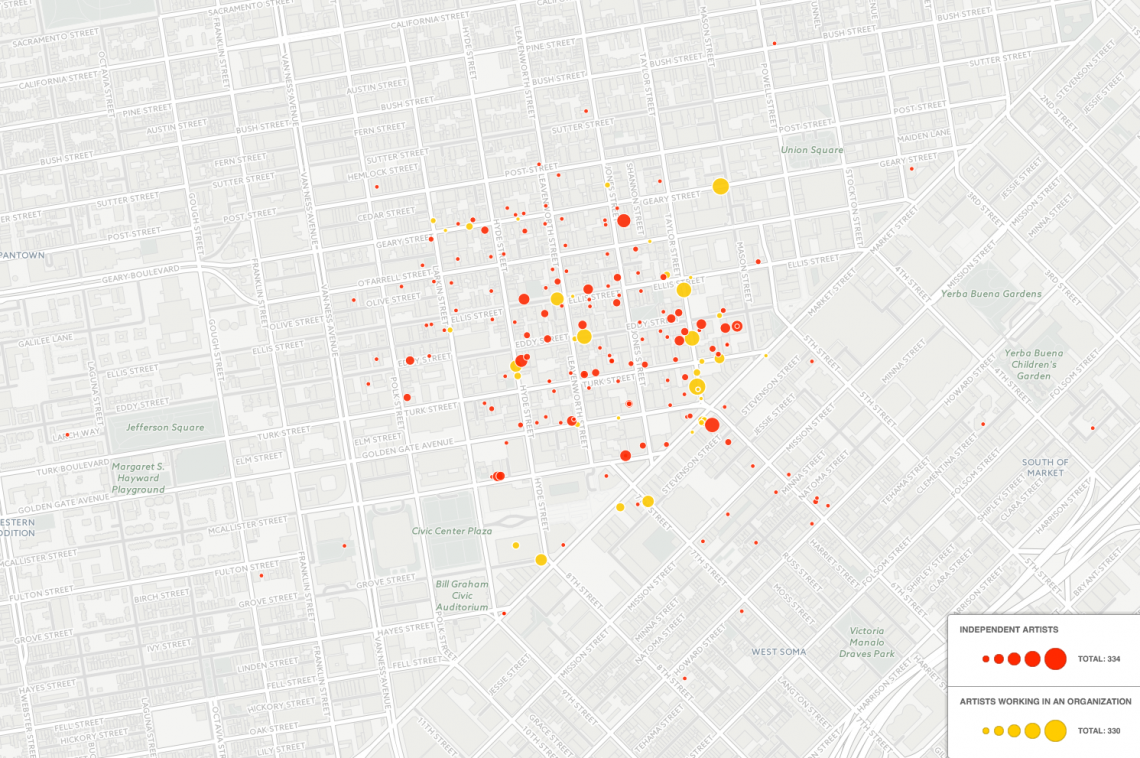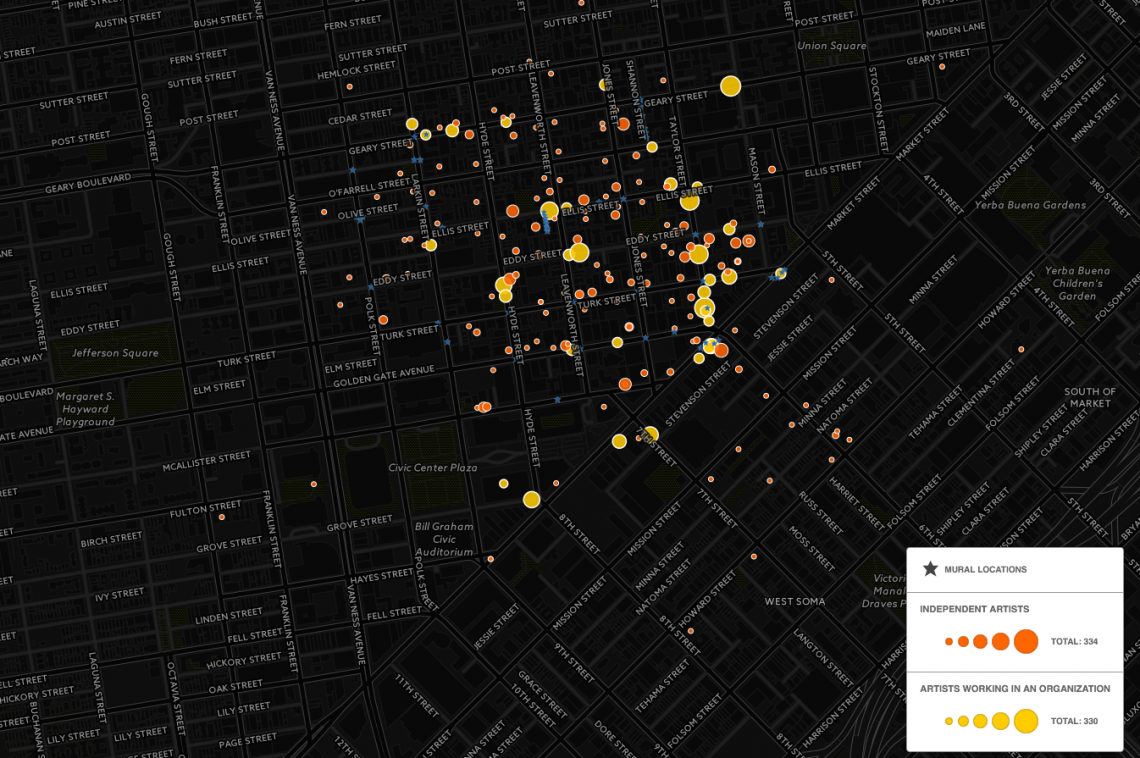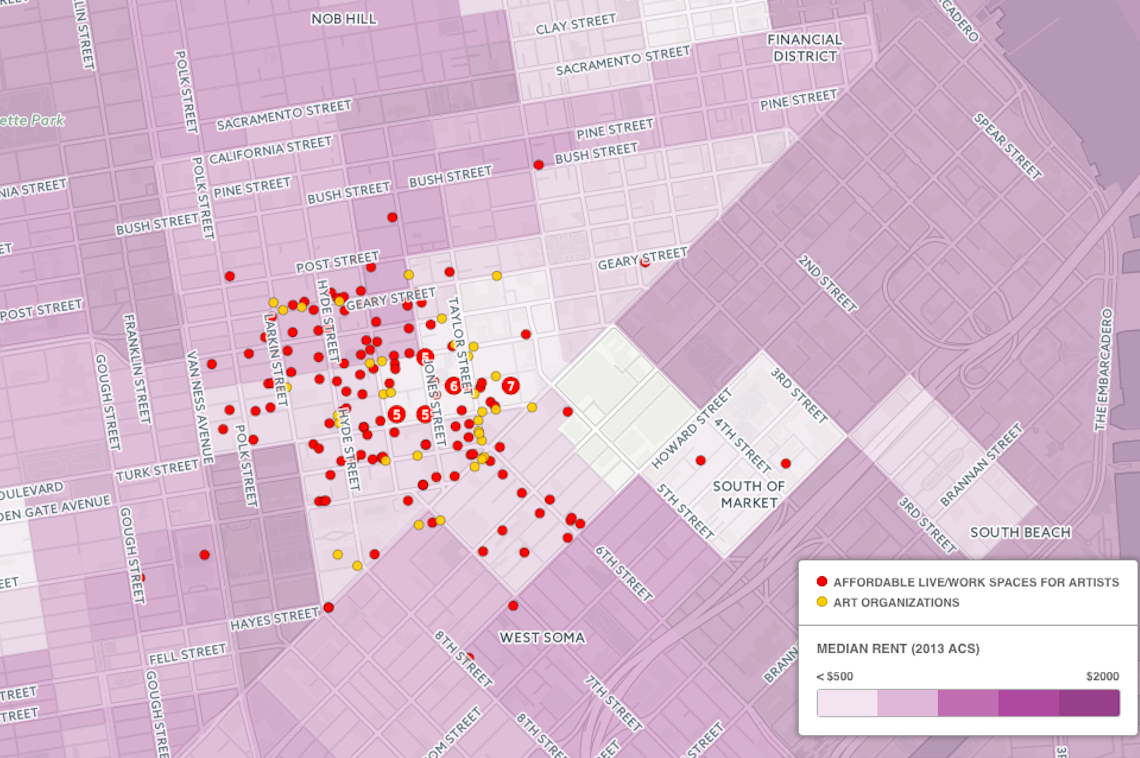


San Francisco, CA (population 826,000) is home to the Tenderloin, a persistently challenged neighborhood that is poised to be an interesting laboratory in which to explore issues around equitable, integrated development. A combination of permanently affordable housing with several initiatives aimed at providing artists and art and cultural non-profit organizations with permanent site control may serve as a counterbalance to the luxury development pressures of the city. Through respondent-driven sampling and community-engaged mapping, the Wildflowers Institute proposes to engage the full Tenderloin community in describing its identity and existing cultural assets; identifying the formal and informal spaces in which artists live, work, and spend their free time; engaging the relevant community development corporations around integrating arts uses into affordable housing spaces; and develoing policy and legislative proposals related to the development of this neighborhood.
Our most important accomplishment over the past eighteen months is uncovering a sustainable creative force in the Tenderloin. The six hundred and fifty artists we have identified in the Tenderloin are internally driven to create and express themselves. This galaxy of artists constitutes a self-organized community art incubator.
We learned that artists and residents depict the neighborhood as a sanctuary for healing and self-improvement. Immigrants and refugees from war-torn nations now live in the neighborhood, recovering from their trauma. Poor blacks and whites and individuals of different gender preferences reside in the Tenderloin because they feel safe and free to be themselves, or “free2be.” When we invited artists to submit artwork for consideration of a $1,000 award, the majority of some hundred and eighteen artists narrated the theme of healing in their personal story.
A fresh language in the visual arts, music, poetry, and short stories is emerging from the resident artists about healing and self-improvement. The language expresses the artists’ insights from their experiences of healing—between different races, ethnicities, and gender identities, among loved ones, and within themselves. Healing, self-improvement, and being “free2b” defines what it means to have cultural equity in the Tenderloin.
We are applying what we have learned about the culture of the informal side of the community to the development of three general principles for economic development in the Tenderloin: the recognition that amazing artwork is rooted in and grows out of the Tenderloin, the creation of public policies that enrich the vibrant cultural life of the neighborhood, and the notion that strengthening the healing in the Tenderloin strengthens the culture of San Francisco.
We are very excited about the insights we have gained from this deep work and how it builds on the work we have done in eighteen other communities over the years. We are also excited about the potential to better understand and communicate our insights, in the hope of educating other private and public organizations and facilitating their support for the Tenderloin and similarly challenged neighborhoods around the nation.
LEARN MORE
See below for recent updates, press, and events from this project





